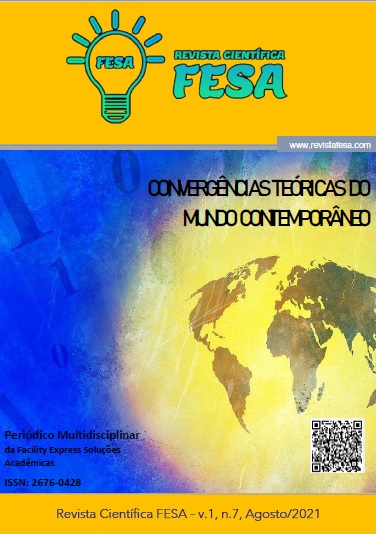A ARTE DE CONTAR E LER HISTÓRIAS NA EDUCAÇÃO INFANTIL
DOI:
https://doi.org/10.29327/232022.1.7-3Palavras-chave:
Contação de Histórias, Ensino-aprendizagem, DesenvolvimentoResumo
O presente trabalho explora a história, a narrativa e o valioso impacto na prática para o ensino e desenvolvimento em sala de aula. Examina o a contação de histórias como processo no ensino. Discorre acerca do uso das narrativas e suas estruturas. Mostra diferentes abordagens e estratégias educativas a permitir um grande avanço no ensino-aprendizagem. Categoriza a contação de histórias como um importante mecanismo para o aprendizado, a socialização e, também, para absorção da cultura.
Referências
ABRAMOVICH, F Literatura Infantil gostosuras e bobices. Editora Scipione, 1989.
CAMERON, L. Teaching languages to young learners. Cambridge: Cam-bridge University Press. 2001.
CAMPBELL, J. O Herói de Mil Faces, Ediouro, Edição 2. 1988.
COSTA, P.L.; VALDEZ, D. Ouvir e viver história na Educação Infantil: um direito da criança. São Paulo: Alínea. 2007.
BORDEN, W. ‘Narrative perspectives in psychosocial intervention fol-lowing adverse life events’, Social Work,37(2), pp. 135–4, 1992.
BORDEN, W. ‘Narrative perspectives in psychosocial intervention fol-lowing adverse life events’, Social Work,37(2), pp. 135–4, 1992.
CUNHA, M.A.A. Literatura infantil: teoria e prática. São Paulo: Ática, 2003.
CURTAIN, H.; Dahlberg, C. A. Languages and children: Making the match. Boston: Pearson Education. 2004.
ELLIS, G.; BREWSTER, J. Tell it again: The new storytelling handbook for primary teachers. United Kingdom: Pearson Education. 2002.
FERREIRA, A. Contar histórias com arte e ensinar brincando: para educa-ção infantil e séries iniciais do ensino fundamental. Rio de Janeiro, Wak, 2 ed. 2008.
FIELD.S. Screenwriter season: about stories. Peguin, 5 ed. 2012.
HARDY, P. An investigation into the application of the Patient Voices digi-tal stories in healthcare education: quality of learning, policy impact and practice-based value. Belfast: University of UlsteR. 2007.
KRASHEN, S. D. Second language acquisition and second language learn-ing. Oxford: Pergamon Press. 1981.
KRASHEN, S. D., & Terrell, T. The natural approach: Language acquisition in the classroom. Hayward, CA: Alemany Press. 1983.
LIPTON, G. Practical handbook to elementary foreign language programs. Lincolnwood, IL: National textbook. 1998.
MACHADO, R. A. Fundamentos teóricos-poéticos da arte de contar histó-rias. São Paulo: DCL. 2004.
MARK, M; PEARSON, C.S; O Herói e o Fora-da-lei. Cultrix; Edição: 2ª. 2003.
MCKEE, R.; FRYER, B. Storytelling that moves people. Harvard Business. 2003.
MCLEAN K.C. Selves creating stories creating selves: a process model of self development, Altl, Click.2007.
NUNAN, D. Second language teacher education. Cambridge: CUPress. 1990.
OWOCKI, G. Comprehension “Strategic Instruction for K-3 students. Portsmouth, NH: Heinemann Educational Books. 2003.
ROSSITER, M. Narrative and stories in adult teaching and learning. (Report No. EDO-CE-02241). Washington, DC: Education Resources Information Cen-ter. 2002.
SOUZA, L.O. A contação de histórias como estratégia pedagógica na educa-ção infantil e ensino fundamental. Revista Educere, v.6, n.12.
VOGLER, C. A jornada do escritor. Aleph. 2007.


